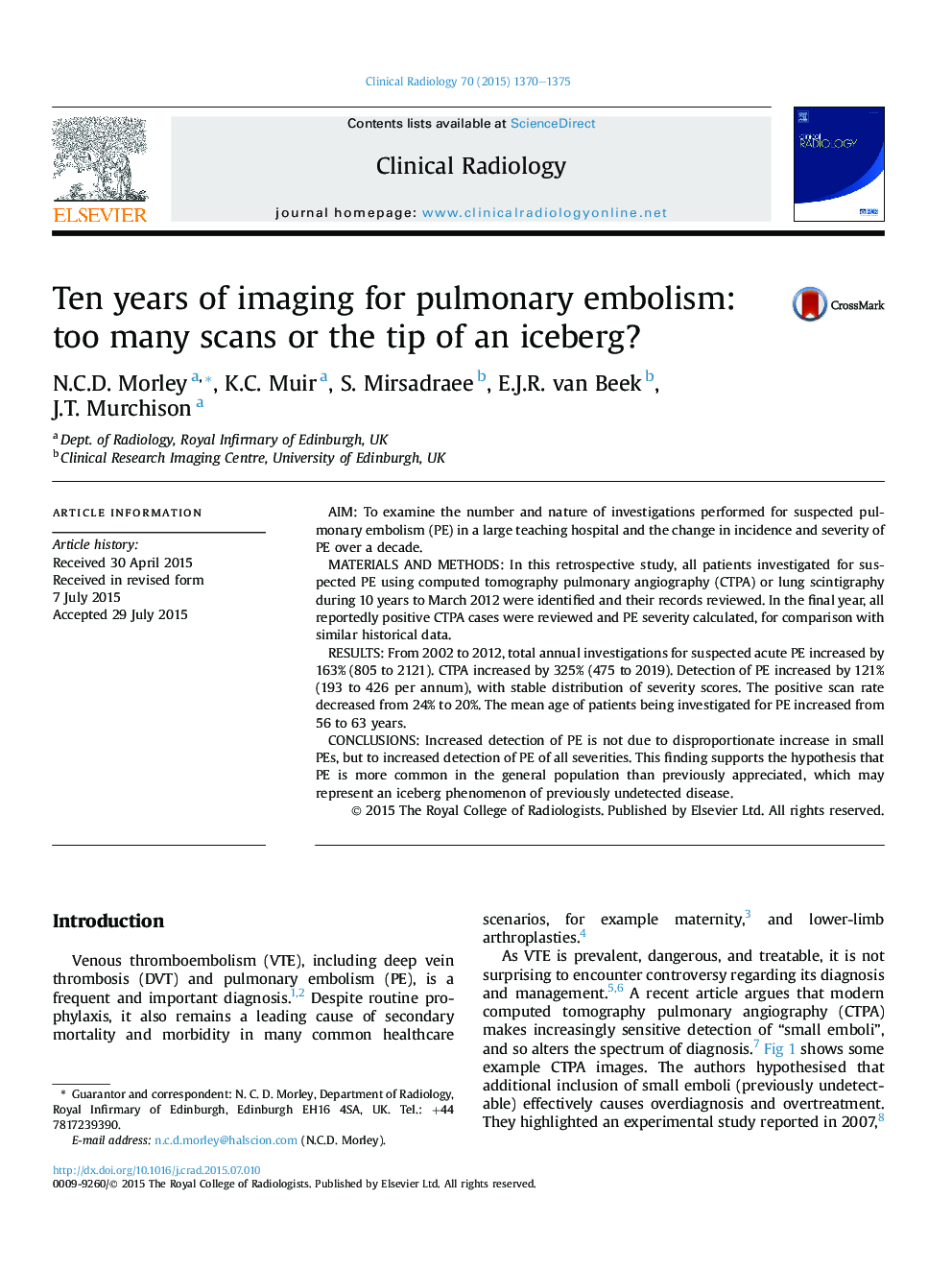| Article ID | Journal | Published Year | Pages | File Type |
|---|---|---|---|---|
| 3981354 | Clinical Radiology | 2015 | 6 Pages |
•We have examined PE incidence, severity and rate-of-investigations over a decade.•The rate of investigation has more-than doubled and PE incidence is increasing.•This occurs in all age groups and without change in distribution of severity scores.•This suggests an iceberg phenomenon due to subclinical disease.
AimTo examine the number and nature of investigations performed for suspected pulmonary embolism (PE) in a large teaching hospital and the change in incidence and severity of PE over a decade.Materials and methodsIn this retrospective study, all patients investigated for suspected PE using computed tomography pulmonary angiography (CTPA) or lung scintigraphy during 10 years to March 2012 were identified and their records reviewed. In the final year, all reportedly positive CTPA cases were reviewed and PE severity calculated, for comparison with similar historical data.ResultsFrom 2002 to 2012, total annual investigations for suspected acute PE increased by 163% (805 to 2121). CTPA increased by 325% (475 to 2019). Detection of PE increased by 121% (193 to 426 per annum), with stable distribution of severity scores. The positive scan rate decreased from 24% to 20%. The mean age of patients being investigated for PE increased from 56 to 63 years.ConclusionsIncreased detection of PE is not due to disproportionate increase in small PEs, but to increased detection of PE of all severities. This finding supports the hypothesis that PE is more common in the general population than previously appreciated, which may represent an iceberg phenomenon of previously undetected disease.
